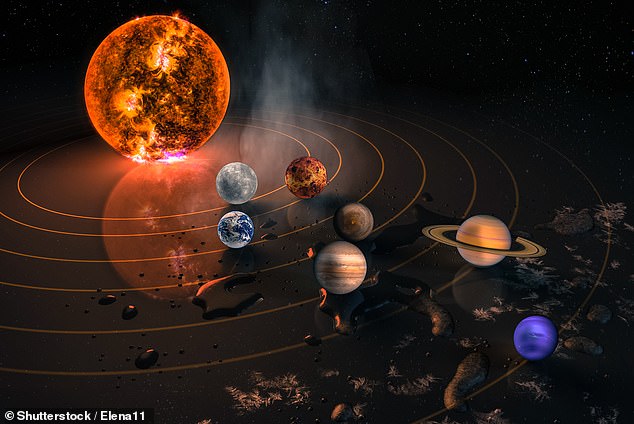
Rare Planetary Parade Visible This Month—Last Chance Until 2040: How to Watch
Okay, I need to shorten this article to about 600 words and add some pictures as per the user’s request. Let me start by reading through the original content to understand the key points.
First, the main event is a planetary alignment of seven planets on February 28, which won’t happen again until 2040. The planets involved are Mars, Jupiter, Uranus, Venus, Neptune, Mercury, and Saturn. The alignment is when they appear on the same side of the sun. The article mentions that five planets aligning isn’t too rare, but seven is every few years, so I should highlight that this is a rare event.
Next, details about visibility: most planets are visible with the naked eye except Uranus and Neptune, which need binoculars or a telescope. The best viewing time is just after sunset, and tips include finding a dark location away from light pollution. Also, the moon won’t be a problem because it’s in a dark phase. The article includes some quotes from experts like Jake Foster and Preston Dyches, which add credibility, so I should keep those but maybe shorten them.
There are some specific details about how to identify each planet by their color and brightness: Venus is the brightest, Jupiter is second, Saturn is yellowish and fainter, Mars is orange-red. Uranus and Neptune require magnification. The piece also explains that planetary alignments are a matter of perspective from Earth, not actual proximity in space. The NASA expert mentions that the planets don’t orbit in the same plane, so perfect alignment isn’t possible, which is a key point to include.
The original article has images linked, like the conjunction of Venus and Jupiter, and Uranus/Neptune needing binoculars. The user wants some pictures added, but since this is text, I can note appropriate places to insert images with captions. For example, where they mention Venus and Jupiter, a photo of their conjunction would fit. Another image showing how Uranus and Neptune might look through a telescope could help. A diagram of the planetary alignment could also be useful.
I need to condense without losing important info. Maybe combine some paragraphs. For instance, grouping the visibility tips: dark location, time after sunset, moon phase. Then the planet identification: brightness, colors, ordering in the sky. Trim quotes to their essence. Also, the fact box about identifying planets can be simplified into bullet points or a brief list.
Check the word count. Original is quite lengthy. Cut repetitive parts, like explaining why alignments happen, keep the key explanation from Dr. Baird about alignment being a viewpoint artifact. Ensure the final message about this being rare, next occurrence in 2040, and that six planets are already aligned, with Mercury joining on Feb 28.
Make sure to mention that even though it’s called a parade, the planets aren’t actually close in space. Avoid too much technical jargon. Keep the language accessible. Maybe number the tips for clarity.
I also need to mention the images in the text, like suggesting where images would be placed with captions. But since it’s a rewrite, perhaps use placeholder comments for images, or simply state "Image: " where appropriate.
Putting it all together: start with the event details, mention the planets, when and how to view, tips on visibility, how to identify each planet, explanation of alignments, and the rarity of the event. Trim any redundant examples, combine expert quotes into shorter references, ensure flow from introduction to details to conclusion.
Check for keywords to maintain SEO: planetary alignment, parade of planets, February 28, 2040, visibility tips, etc. Make sure those are included. Keep subheadings if possible for structure. Maybe use short subheadings like "How to View the Parade," "Identifying the Planets," etc.
Once the condensed version is drafted, count the words to ensure around 600. Finally, ensure the tone remains engaging and informative, suitable for a general audience interested in astronomy events.
Rare Seven-Planet Parade to Light Up the Night Sky on February 28
(Image: Illustration of planetary alignment)
Stargazers are in for a celestial treat on February 28, as seven planets will align in a dazzling "parade" visible just after sunset. This rare event—featuring Mercury, Venus, Mars, Jupiter, Saturn, Uranus, and Neptune—won’t occur again until 2040


